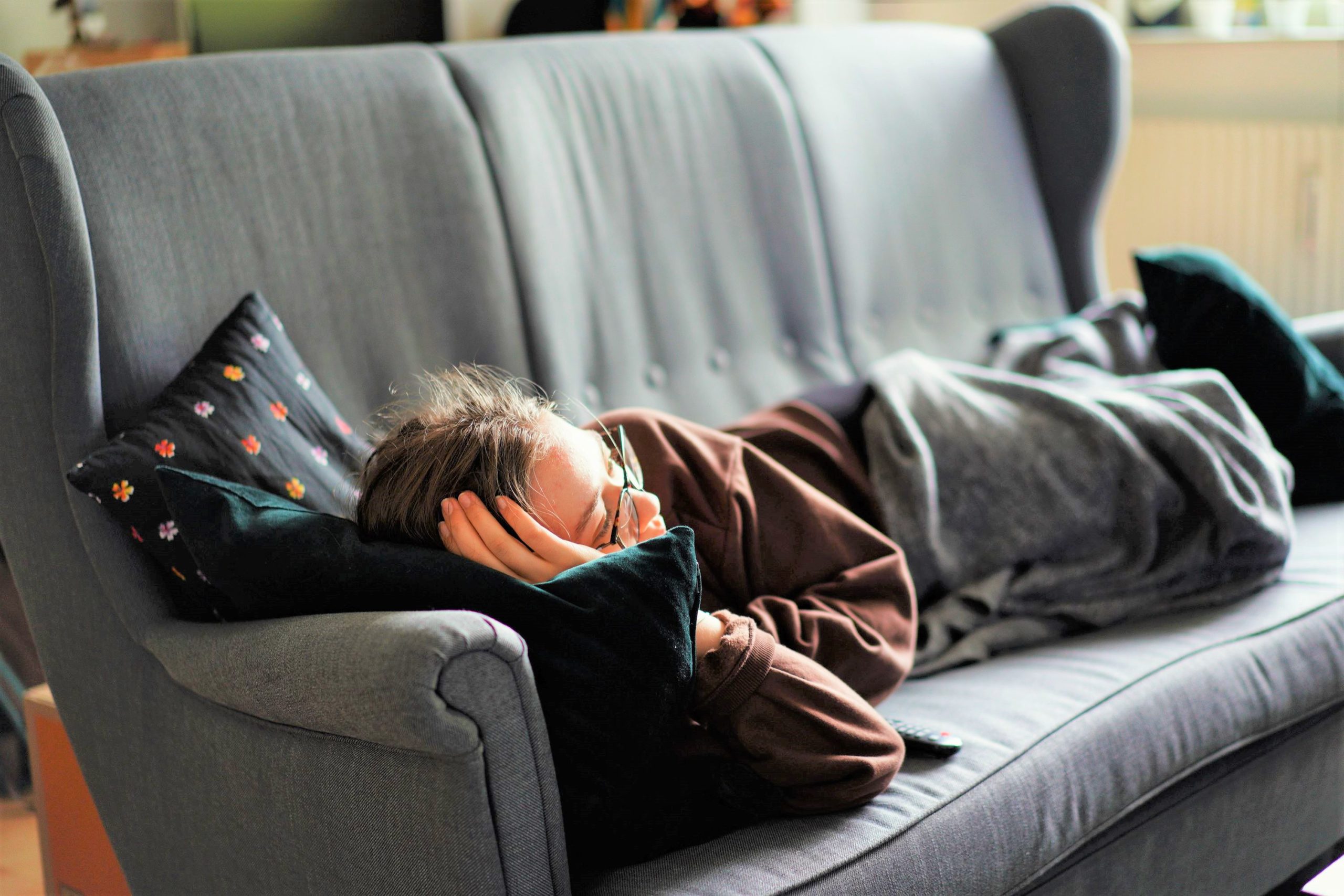Advice from Experts: Stay as active as you can for the best life
Five tips to get you off the sofa – because sitting more during COVID-19 is hurting your health
By Wuyou Sui, for The Conversation
With the Canadian government continuing to recommend physical distancing measures, many people are finding themselves confined to their homes more than ever before. While some are citing the benefits of being able to work from home and having time for self-care, the closures of recreational facilities and commercial gyms make physical distancing a barrier to physical activity for many.
In response, several health organizations and groups are emphasizing the importance of meeting physical activity guidelines. The Canadian Society for Exercise Physiology recommends 150 minutes of moderate-to-vigorous physical activity per week, which is roughly 30 minutes of exercise a day, five days a week. Assuming people are spending half an hour a day exercising, and then factoring in the 7.5 to eight hours of sleep the average adult gets, that leaves 15.5 waking hours unaccounted for.
So, what are people doing in the other 97 per cent of the day they spend awake? If you’re like the average Canadian, then 9.5 hours of your day is spent sitting.
The science of sitting
Sitting, a form of sedentary behaviour (along with lying down and reclining), is one of the most prevalent, habitual and “invisible” behaviours we perform. We sit in nearly every aspect of our lives from eating to commuting and working to screen time and more.
This is especially true of home-based sitting given the current stay-at-home recommendations. Netflix and other streaming services announced significant increases in traffic and new subscribers recently, while app downloads and weekly time spent on apps have also skyrocketed in the past months.
But why is sitting this much so bad? It may sound harmless, but chronic excessive levels of sitting have been associated with an increased risk of developing heart disease, Type 2 diabetes, hypertension and even some cancers. Even among young people, for whom chronic disease risk isn’t as immediately concerning, excessive sitting poses a potential harm through an increased risk of depression and anxiety.
Perhaps most concerning is that these increased risks are independent of physical activity levels — meaning even if you exercise regularly, you’re still placing yourself at risk for all of these diseases if you spend too much time sitting.
Tips to sit less
So, what can be done to combat all the sitting we do? Put simply — just standing up. Merely standing up or walking for about five minutes for every 30 minutes of sitting can help reduce your risk of heart disease, cancer and even death.
Unfortunately, it’s not as easy as it sounds. As a health behaviour researcher at Western University, I help people to develop action plans to reduce their sitting. Because we are so used to sitting everywhere, all the time, we typically don’t mention sitting when describing activities we are doing. For example, we think of watching TV, not sitting down and watching TV.
It’s difficult enough to change a habit or behaviour when you know it’s happening. Things get harder when you also consider that nearly every environment is designed for sitting: couches, chairs, cars, offices, etc. However, there are things we can do to make “sitting less” easier. Here are some practical strategies that I’ve found to be useful for my participants to leave you in “good standing”:
• Shape your environment: Just like being physically active is easier with the right equipment, modifying your space for standing and moving will make it easier to do so. This can be done by stacking some books for a standing desk or creating a route to pace in the house while on chatting on your phone.
• Remind yourself you’re sitting: Because sitting is so habitual for most of us, we often need a reminder to break it up. Setting an alarm for every 30 minutes before sitting down, or simply putting a sticky note on your computer screen or desk of when you sat down can be a useful prompt to get up more often.
Pair it up: A break from sitting isn’t necessarily a break from what you’re doing, such as working or watching TV. But if standing/moving distracts you from your task, then pair it with another healthy behaviour like drinking more water. Getting up to drink water will break up your sitting time, as will going to the washroom more often as a result. Plus, you’ll get all the benefits of drinking more water too.
• Go the distance: When it comes to breaking up sitting time, the more frequent the breaks, the better. Incidental movement — the moving we do while going about our day such as doing laundry or the steps we take while walking around our home — is an easy way to break up sitting time. Try tracking your steps, and setting a step goal (aim for 2,000 more this week!) to help you monitor your progress.
• Tell a friend: Keeping accountable with a housemate or friend can help keep you motivated. Most smartphones have a built-in activity tracker that can track your steps, with apps available to share this data with your social network. Competing for steps with a friend can put the “health” in “healthy competition!”
Author Wuyou Sui is a PhD Candidate, Exercise and Health Psychology Lab, Western University
Not convinced yet? Here’s another view:
The dangers of a sedentary Covid-19 lockdown: inactivity can take a toll in just two weeks
By James McKendry, for The Conversation
As the world digs in for the second wave of COVID-19, flu season and winter, people also face a serious risk from reduced physical activity — especially older adults. Developing a plan to be physically active now will help you to stay strong and healthy through the long winter ahead.
While most people are aware of the benefits of physical activity — increased muscle and strength, reduced risk of disease, better quality of life and a lower risk of death — we tend to be less aware of how damaging and expensive reduced physical activity can be.
The loss of muscle and strength as you get older (known as sarcopenia) is something with which we are all familiar. We have all heard older family members say, “I’m just not as strong as I used to be,” or “I just can’t do that anymore.” But did you know that inactivity can make muscle loss a whole lot worse?
Health effects of inactivity
Physical inactivity can be forced on a person by an acute event such as a broken arm or leg or becoming bed-bound due to illness. However, reduced physical activity, such as step reduction, is a long-term choice that brings about multiple negative health consequences.
Insulin resistance (a warning sign for the development of type 2 diabetes), reduced muscle mass, increased body fat and poor sleep quality are just some of the health concerns caused by physical inactivity. Physical inactivity is also a major contributor to poor mental health and social isolation, which can be particularly problematic for older adults.
The health effects of inactivity start piling up within days.
McMaster University researchers have shown that reducing daily steps to fewer than 1,500 — similar to the activity level of people who are housebound during this pandemic — for just two weeks can reduce an older person’s insulin sensitivity by as much as one-third. The same period of inactivity also led to individuals over age 65 losing as much as four per cent of their leg muscle.
To make matters worse, once an older individual loses muscle, it is much more difficult to restore. Even when the research subjects returned to their normal daily routines, they did not regain their lost muscle. Effectively, older individuals simply don’t possess the same ability to bounce back that younger people do.
Regaining muscle requires deliberate effort. So, it truly is a case of use it or lose it.
Resistance is not futile
As a muscle physiologist with a keen interest in healthy aging, I’m pleased to report it’s not all doom and gloom. There are some things you can do — resistance exercise and eating your protein — to keep and even build muscle, get stronger and maintain your health for this winter and beyond.
The most effective way to maintain the muscle you have is strength training, or resistance exercise, which, put simply, means performing work against an additional load. And it doesn’t have to be complicated. If you have access to a gym to use free-weights and guided-motion machines, that’s great. However, there are many valuable alternatives you can easily do at home. Body-weight exercises such as push-ups, squats and lunges, elastic-band exercises and stair-climbing are just a few options that will help you to meet the World Health Organization’s latest physical activity guidelines.
The good news for those who may be put off by the sound of resistance exercise is that doing any exercise with a high degree of effort will help you to get stronger and prevent (at least some) muscle loss. If, for any reason, performing resistance exercise isn’t possible, simply adding a walk, a bike ride or some lower-intensity strength exercises such as yoga or Pilates to your daily routine can have significant physical and mental health benefits.
Protein and muscle
Of course, a healthy diet and avoiding overeating are also critical to staying healthy. Protein-rich foods are particularly important, since they make you feel fuller for longer and provide building blocks for your muscles.
It is generally agreed that older adults need more protein than current guidelines suggest.
A good, easily achievable, target would be to eat 25 to 40 grams of protein with each meal (about one or two palm-sized portions). This equates to approximately 1.2 to 1.6 grams of protein per kilogram of body mass each day. Also, getting your protein from both animal (dairy, meat, fish, and eggs) and plant-based (beans, nuts, seeds, and lentils) sources may be beneficial.
Given how quickly inactivity and poor nutrition can sap your strength and your health, doing something now is the best way to power through the cold, dark winter and beyond.
Author James McKendry is a Post-doctoral Research Fellow in exercise physiology, muscle protein metabolism and aging, at McMaster University.
























